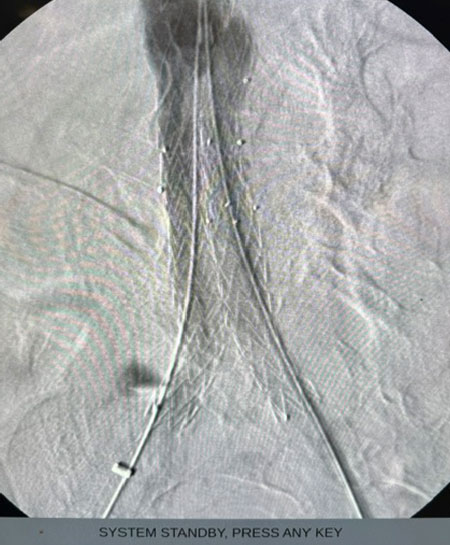Call me - +30 6944.237.080 - +30 210.86.20.001

Abdominal Aortic Aneurysm
An abdominal aortic aneurysm (AAA) is a potentially life-threatening condition that involves the weakening and expansion of the aorta, the largest blood vessel in the abdomen. AAA typically develops slowly and often goes unnoticed until it becomes a medical emergency. Understanding the causes, symptoms, and treatment options for AAA is crucial for early detection and intervention. In this article, we will explore AAA in detail to provide you with valuable information about this condition.
Causes:
- Atherosclerosis: The primary cause of AAA is atherosclerosis, a condition characterized by the buildup of fatty deposits (plaque) on the inner walls of the arteries. Over time, this plaque can weaken the aortic wall, leading to an aneurysm.
- Genetics: Family history plays a significant role in the development of AAA. If you have close relatives with a history of aortic aneurysms, you may be at a higher risk.
- Smoking: Smoking is a major risk factor for AAA. It not only contributes to the development of atherosclerosis but also weakens the aortic wall directly.
- Congenital disorders such as Marfan syndrome, Ehlers–Danlos syndrome, Turner syndrome, and polycystic kidney disease.
- Infection and trauma
Symptoms:
AAA is often asymptomatic, especially in its early stages. However, as the aneurysm grows or becomes more advanced, it may lead to the following symptoms:
- Abdominal Pain: A throbbing or constant pain in the abdomen or lower back may occur as the aneurysm enlarges.
- Pulsating Mass: In some cases, a pulsating mass can be felt in the abdomen, particularly when lying down.
- Deep, Constant Pain: Severe, persistent pain may signal that the aneurysm is about to rupture, which is a medical emergency requiring immediate attention.
- Acute abdominal or lumbar (back) pain may indicate aneurysm rupture, an extremely urgent and life‑threatening condition.
Treatment:
Watchful Waiting: Small AAA may not require immediate treatment but should be monitored regularly through ultrasound or CT scans.
Lifestyle Modifications: Quitting smoking, managing blood pressure, and maintaining a healthy diet and exercise routine can help slow the progression of AAA.
Medications: In some cases, medications may be prescribed to control blood pressure and reduce the risk of aneurysm growth.
Endovascular Aneurysm Repair (EVAR): This minimally invasive procedure involves the placement of a stent graft inside the aneurysm to reinforce the aortic wall and redirect blood flow.
Open Surgical Repair: For larger or more advanced AAAs, open surgery may be necessary to replace the weakened section of the aorta with a synthetic graft.
Open surgical repair is the classic method for managing abdominal aortic aneurysms and is now primarily employed for cases that cannot be treated endovascularly. Younger age is also an important criterion favoring this approach. For some patients, it represents the only therapeutic option. It requires postoperative hospitalization, rehabilitation, and follow‑up until full recovery. As with any surgical procedure, there is a risk of minor or even serious complications. The vascular surgeon will discuss in detail the specific needs, the operative plan, and the information that should be known regarding this surgery.
Conclusion:
Abdominal aortic aneurysm is a serious condition that can be life-threatening if left untreated. Regular check-ups, particularly for those at higher risk, are crucial for early detection. If you experience any symptoms or have risk factors for AAA, seek medical attention promptly. Understanding the causes, symptoms, and treatment options for AAA empowers individuals to take proactive steps towards their health and well-being.
